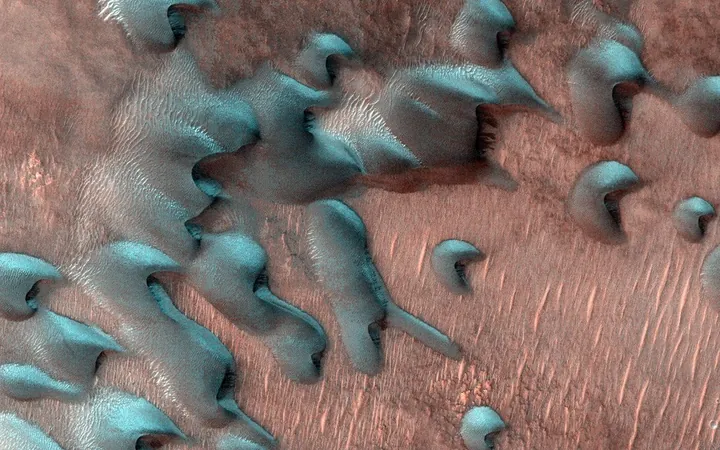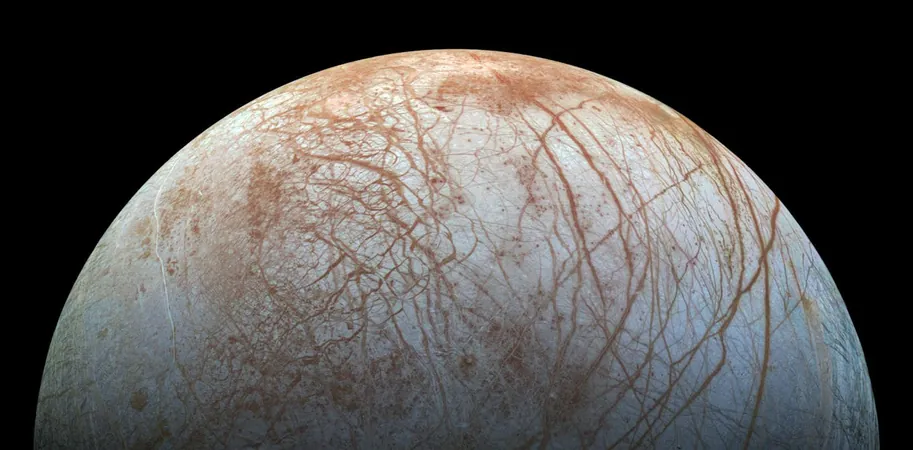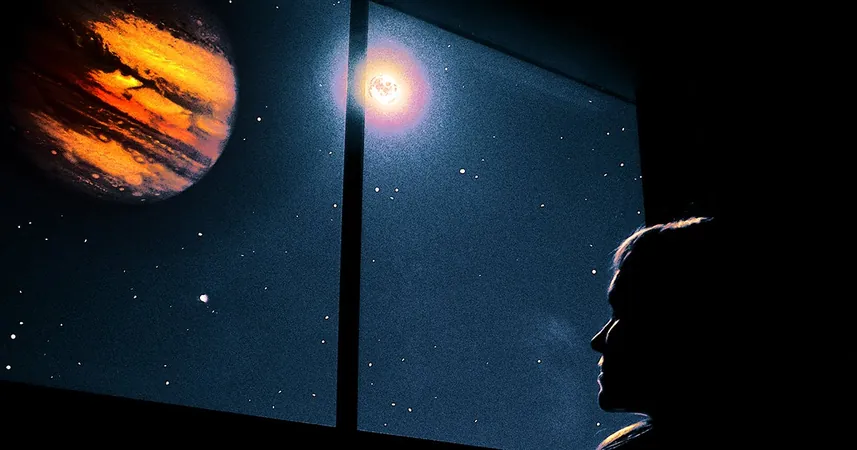
Discover the Surprising Snow on Mars: Cube-Shaped Snowflakes and Carbon Dioxide Frost!
2025-01-07
Author: Jacques
When we think of snow, we often envision picturesque winter wonderlands or chaotic traffic jams on Earth. But did you know that our neighboring planet, Mars, experiences its own version of snow? While it may not resemble the fluffy flakes we are familiar with, the Red Planet has some intriguing weather phenomena that are well worth exploring.
Mars, like Earth, has four distinct seasons thanks to its axial tilt. However, its orbit around the Sun is much longer, taking about 687 Earth days. This means that each season lasts nearly twice as long as those on our home planet. As winter descends on Mars, temperatures can drop to mind-numbing lows of -123°C (-190°F), particularly at the poles, making it far colder than the harshest winters we've experienced on Earth.
What Does Snow Look Like on Mars?
The snow on Mars consists primarily of carbon dioxide, also known as dry ice, alongside some water ice. Unlike the thick layers of snow found on Earth, Martian snow sublimates – turning directly from a solid into a gas – before it reaches the surface due to the planet's extremely thin atmosphere. This unique phenomenon means that while some snow does reach the ground in solid form, much of it vaporizes long before it can accumulate.
According to NASA's planetary scientist Sylvain Piqueux, while "enough snow falls that you could snowshoe across it," for skiing enthusiasts, the best bet would be to venture into the planet’s craters or cliffside areas, where snow can settle on inclined surfaces.
Where on Mars Does It Snow?
Snowfall on Mars is primarily confined to the polar regions, occurring under specific conditions – namely, during cloud cover and at night when the planet is facing away from the Sun. NASA's Mars Reconnaissance Orbiter has been instrumental in detecting carbon dioxide snow from its lofty vantage point, equipped with the advanced Mars Climate Sounder, which allows scientists to visualize phenomena beyond visible light.
However, curious space enthusiasts might wonder why there are so few images of snow actually falling on Mars. The reasons lie in the limitations of rovers and orbiters; the snow primarily happens in remote areas, which are hard for rovers to reach, and cloud cover inhibits orbital observations.
Groundbreaking Discoveries: Snowflakes and Frost
Some of the most exciting discoveries about Martian snowfall come from studies conducted by NASA's Phoenix lander in 2008, which revealed snow falling from clouds 4 km (2.5 miles) above its landing site. Interestingly, the snow often vaporizes before it hits the ground, a phenomenon that led scientist Jim Whiteway to declare, "Nothing like this view has ever been seen on Mars."
In terms of snowflake structure, Mars boasts fascinating cube-shaped snowflakes! Unlike the six-sided flakes we commonly see on Earth, Martian snowflakes have four sides due to the unique molecular structure of carbon dioxide ice. These tiny snowflakes are reported to be smaller than the width of a human hair.
Frost on Mars: A Common Occurrence
While snow on Mars is fascinating, frost is even more prevalent. This frost can be composed of either water or carbon dioxide and has been observed since the 1970s when NASA’s Viking landers captured images of it. Recent discoveries by the European Space Agency (ESA) in 2024 showed frost in the Martian tropics, specifically atop the towering Tharsis volcanoes, which includes Olympus Mons – the tallest volcano in the entire Solar System.
The frost found can be thick as a human hair, with estimates indicating a volume of about 150,000 tonnes of water, equivalent to 60 Olympic swimming pools! As winter gives way to spring on Mars, much of this frost and snow melts, leading to striking surface features, such as the intriguing “spiders” seen in Martian landscapes.
In conclusion, while Martian snow may not be the picturesque scene we find on Earth, it reveals a host of unique phenomena that deepen our understanding of this neighboring planet. As technology advances, who knows what further wonders await us on the Red Planet? Keep your eyes on the skies – Mars has more secrets yet to unveil!









 Brasil (PT)
Brasil (PT)
 Canada (EN)
Canada (EN)
 Chile (ES)
Chile (ES)
 Česko (CS)
Česko (CS)
 대한민국 (KO)
대한민국 (KO)
 España (ES)
España (ES)
 France (FR)
France (FR)
 Hong Kong (EN)
Hong Kong (EN)
 Italia (IT)
Italia (IT)
 日本 (JA)
日本 (JA)
 Magyarország (HU)
Magyarország (HU)
 Norge (NO)
Norge (NO)
 Polska (PL)
Polska (PL)
 Schweiz (DE)
Schweiz (DE)
 Singapore (EN)
Singapore (EN)
 Sverige (SV)
Sverige (SV)
 Suomi (FI)
Suomi (FI)
 Türkiye (TR)
Türkiye (TR)
 الإمارات العربية المتحدة (AR)
الإمارات العربية المتحدة (AR)